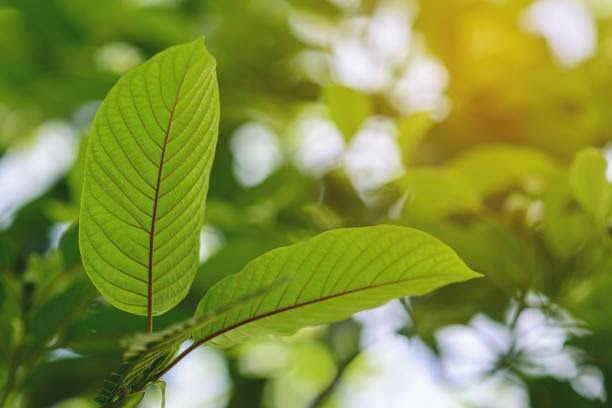
Kratom From the Trees to The Mailbox
Introduction-
Everybody likes to know what they are consuming and where it comes from. It’s always fascinating to know how certain products are made, especially in the industrial age. It’s even more interesting to explore kratom production, because the first half of the process seems to take a step back in time to the preindustrial world. Austin Organic Village has covered part of this topic before in the newsletter The Strains Explained, but never as in depth or detailed as following kratom from the farm to the mail. This topic is a bit larger than usual, so it will be split into two parts. Part one will cover what happens in Indonesia when kratom is picked, dried, processed, and crushed or ground into the product that gets packaged and sent to vendors and processing locations in the United States.
From The Trees-
There is more that goes into harvesting the kratom than just picking leaves off of the trees. Being patient and waiting for the perfect moment to pick the kratom leaves is critical. Having knowledge and patience is important because of the changes in the alkaloid content that takes place within the leaves as they age. Young leaves have higher mitragynine levels, while the mitragynine gradually shifts into 7-hydroxymitragynine in older leaves. The shift gives the kratom different properties and gives consumers differing effects. Mitragynine and 7-hydroxymitragynine are the two most abundant alkaloids found in kratom but they are not the only alkaloids. In fact, there are 28 different alkaloids that make up kratom. Austin Organic Village discusses the alkaloids in depth in the newsletter called Alkaloids and Kratom.
When the leaves mature to the desired alkaloid content, which usually happens at around two years for a newly planted tree, the harvesters begin picking the leaves. They pile the leaves up in large baskets or buckets, and carry them back to the processing site. This job is time consuming and critical in kratom’s journey to the hands of the consumer.
The Drying Process-
The process of drying the massive amounts of kratom leaves previously collected, is one of utmost importance in kratom production. If drying is not done properly and with care, things like mold or other issues can occur. The other reason why having such a good drying process is critical, is because this is how the strains become more tailored to the consumer’s desired effects. Before the drying process begins, the kratom workers will clean the leaves thoroughly to wash off any dirt, bugs, or other undesirable content. Once completed, they will begin one or more of the many drying processes. Some leaves will dry laying out or hanging in the sun, some will dry laying out or hanging inside, and some leaves will be helped along by heat lamps or fans. After the drying is complete, they will begin to remove the stems and veins, and then either crush or grind the remaining kratom leaves. If the farmer wants to create certain specific strains, like bentuangie, there is a fermentation process that will take place. After drying, fermenting, and crushing or grinding, the kratom powder still needs to be packaged.
Mixing and Packaging-
Next in the kratom production process, the kratom workers will mix and match batches of dried and ground strains to reach the desired effects. They don’t necessarily always mix, some may just be one dried strain, but others they will mix in order to make things more potent or give a wider range of effects to a single mixed strain. Many consumers claim that mixed kratom strains tend to be stronger and last longer than single.
After the strains are mixed, the kratom workers will measure, tightly pack, and vacuum seal the strains. They will then label each individual bag and place them in a storage building or warehouse until a supplier packages them up, addresses them, and ships them. From there, the packages will make the long trip to a vendor or their distribution center.
Conclusion-
The hands-on processing of the kratom workers in Indonesia is truly fascinating. The workers take great care to bring quality products to a lot of people. Not only does this industry help the earth by the creation of thousands of trees, but it is in the best interest of the kratom production industry to make sure those trees are taken care of and continue to thrive. The popularity of kratom brings a lot of jobs and income into Indonesia. Their care and hard work has impacted many lives all over the world.
This is the end of the first half of the newsletter. The next half will cover the arrival of the packaged kratom in the United States, testing, any processes that are performed, repackaging, and finally the trip to consumer homes. Austin Organic Village works hard to make sure that any products sent out are high quality and packaged with care. So, take the coupon code, go to www.austinorganicvillage.online, and treat yourself.


